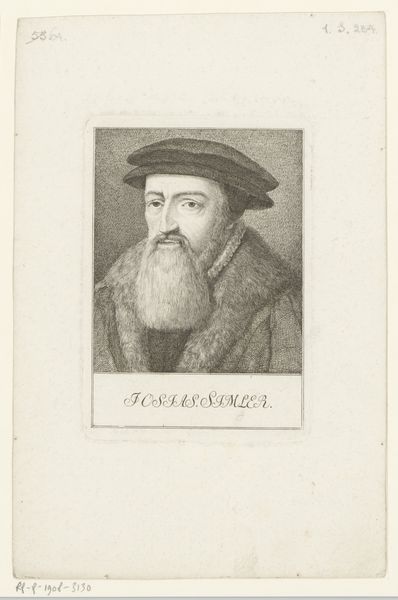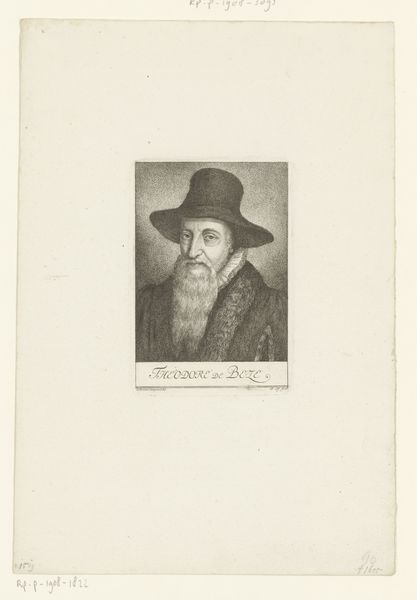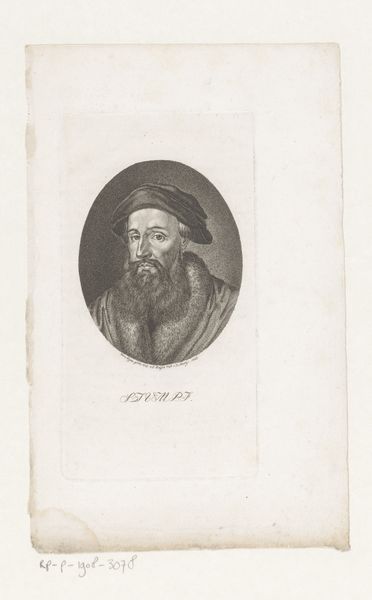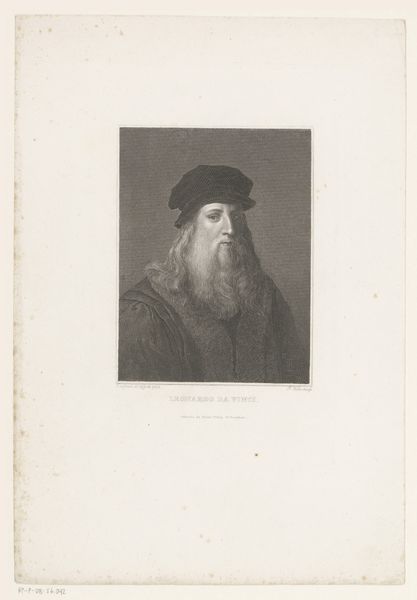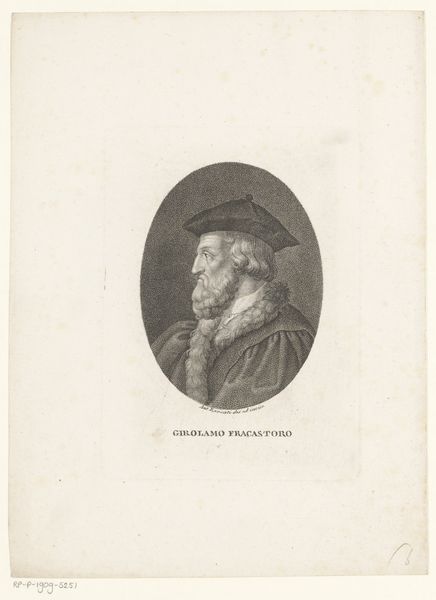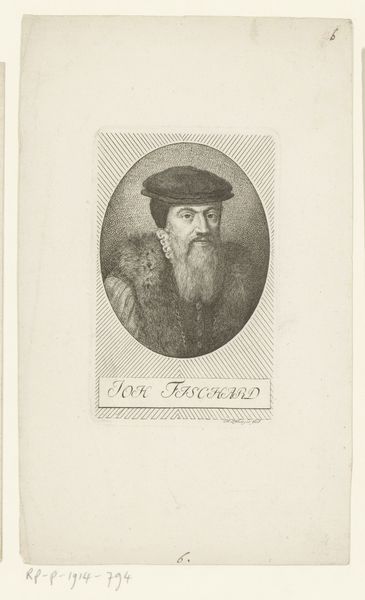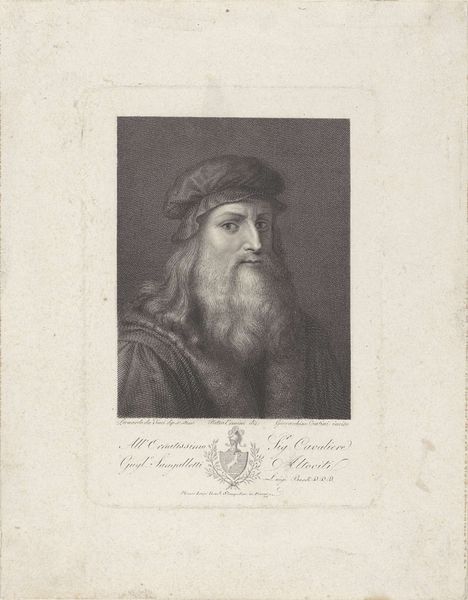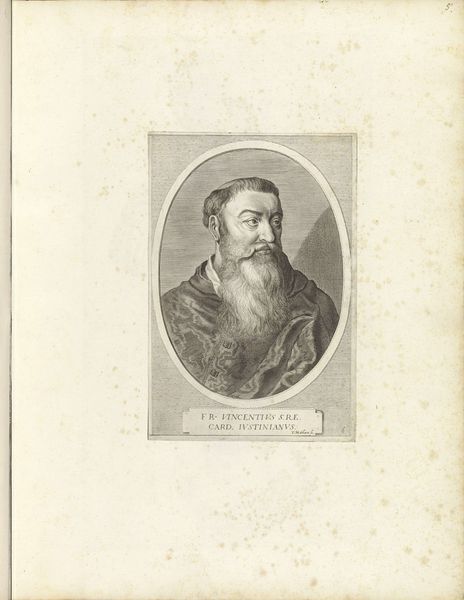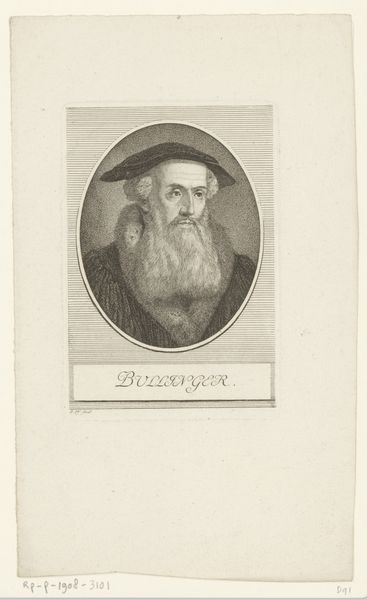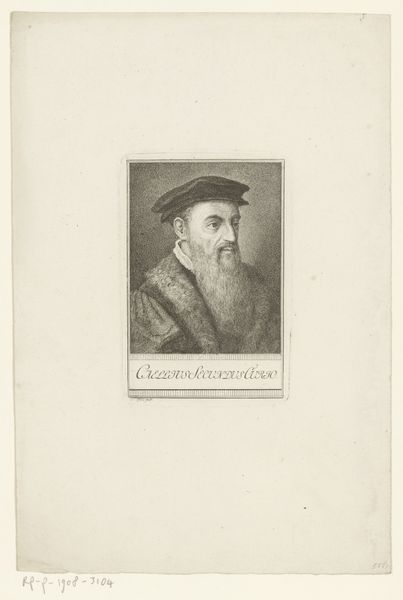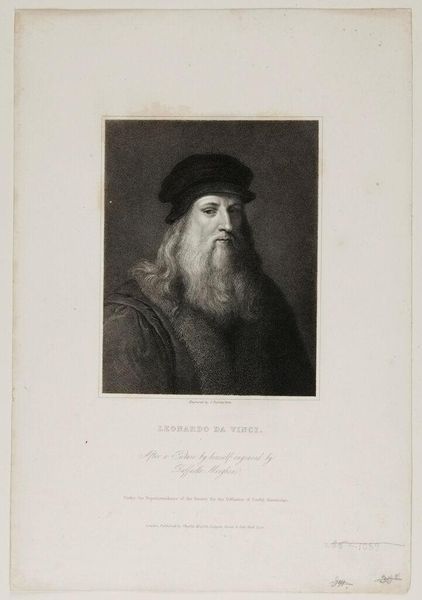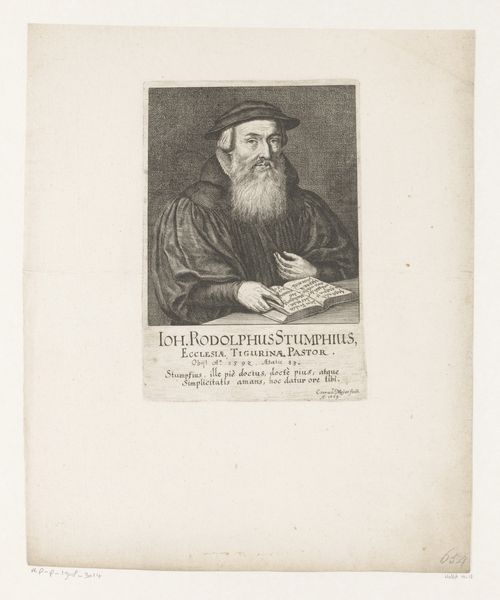
Dimensions: height 128 mm, width 80 mm
Copyright: Rijks Museum: Open Domain
This is Heinrich Pfenninger’s portrait of Gabriel Rollenhagen, made using a technique known as etching. The process starts with a metal plate, usually copper, covered in a waxy, acid-resistant ground. The artist then scratches an image into the ground with a pointed tool, exposing the metal. When the plate is dipped in acid, the exposed lines are ‘bitten’ into the surface. The longer the plate sits in the acid, the deeper the lines, and the darker they will appear in the print. Look closely, and you’ll see the density of fine lines that create areas of tone, from the dense shading of Rollenhagen’s coat to the lighter areas of his face. Notice the sharp, precise lines used for the lettering, and the more organic marks that build up the texture of his fur collar and beard. The skilled labor and time involved in etching meant that prints like these were valuable commodities. They circulated widely, spreading ideas, and demonstrating the status of those depicted. The contrast between the smooth paper and the intricate etched lines reminds us that even seemingly simple artworks like this are the result of complex, skilled processes. The print represents the intersection of art, craft, and commerce in the 18th century.
Comments
No comments
Be the first to comment and join the conversation on the ultimate creative platform.
